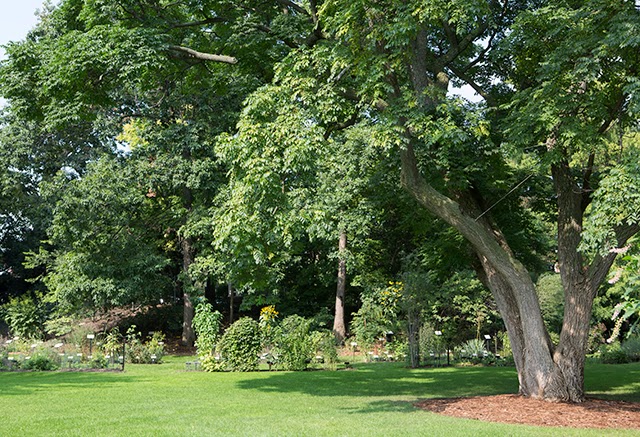I'm grateful to my husband Dan Kramer for setting off an important chain of events last month. On a long flight to Shanghai, he shared my project with his co-worker, Daniel Hayes, and upon their return to the U. S. I received an
email from Professor Hayes encouraging me to contact a man by the name of Clifford Welsch.
Thank you Professor Hayes for that email! A few days later I spoke with
Clifford by phone and a week later visited him and his wonderful wife Margaret
at their home on Welsch Nature Preserve in DeWitt.
Clifford
and Margaret Welsch own 80 acres of land: 20 acres of prairie, 8 of wetland, and 52 of woodland.
They bought the land in 1994 when Clifford retired as a cancer researcher
at MSU. He was worn out from oncology research and wanted to spend his days outdoors learning something new. He knew nothing
of ecology, but taught himself everything there was to learn about
starting and managing a native wildflower and grassland prairie.
He and Margaret started by planting 10 acres of land with native wildflowers and used those first seeds, and those of native grasses, to add an additional 10 acres in later years. There are now over 140 native plant species in their 20 acre prairie, many of which are endangered and threatened. Removing every invasive plant from the field, of which there are now few due to his incredible hard work, is an ongoing task. As if that weren't enough, he mows it all down once a year in the fall and burns it every three years. This helps stimulate new growth and he said the plants come back like crazy the following year. It would be hard work at any age and he is 80! He says it's good for his health, but it's clearly a labor of love.
He and Margaret started by planting 10 acres of land with native wildflowers and used those first seeds, and those of native grasses, to add an additional 10 acres in later years. There are now over 140 native plant species in their 20 acre prairie, many of which are endangered and threatened. Removing every invasive plant from the field, of which there are now few due to his incredible hard work, is an ongoing task. As if that weren't enough, he mows it all down once a year in the fall and burns it every three years. This helps stimulate new growth and he said the plants come back like crazy the following year. It would be hard work at any age and he is 80! He says it's good for his health, but it's clearly a labor of love.
Though they
get a lot of visitors to the preserve throughout the year; from MSU classes and seed
collectors to photographers, Clifford had never heard of anyone
making paper out of invasive plants.
He walked me right through the middle of the field, pointing out and naming
various plants, breaking open seed pods, and giving me the history of the preserve. It was so incredibly different from observing the endangered
plants at MSU, that I had agreed not to touch and where there was
typically only one plant per species available. Clifford and I pushed our
way through a sea of native plants with dried seed heads, leaves, and stems
brushing up along the sides of our legs and sometimes up to our necks! What a
treat it was to be surrounded by a field of native plants with someone who knew them all by name. It was one of the best afternoons I'd
had in a long time.
I
spent the next couple of hours photographing two species. The first, compass plant (Silphium laciniatum), a
threatened plant species which grows up to 12 feet high, and the second, white indigo (Baptisia
lactea), also called prairie false indigo, which is on the special concern
list. The green foliage on both plants was long gone, but the seed heads and dried, curled
leaves held a beauty all their own. It
was a beautiful day and terribly difficult to tear myself away from such
a magical place.
Thank you Clifford for your time, for sharing your
knowledge, for walking me through the field, for allowing me to photograph the
plants, and for sharing your story of love and dedication to the preserve! It is
yet another benefit of doing this kind of project - spending time with inspiring people like you and Margaret, and learning about something so dear.



